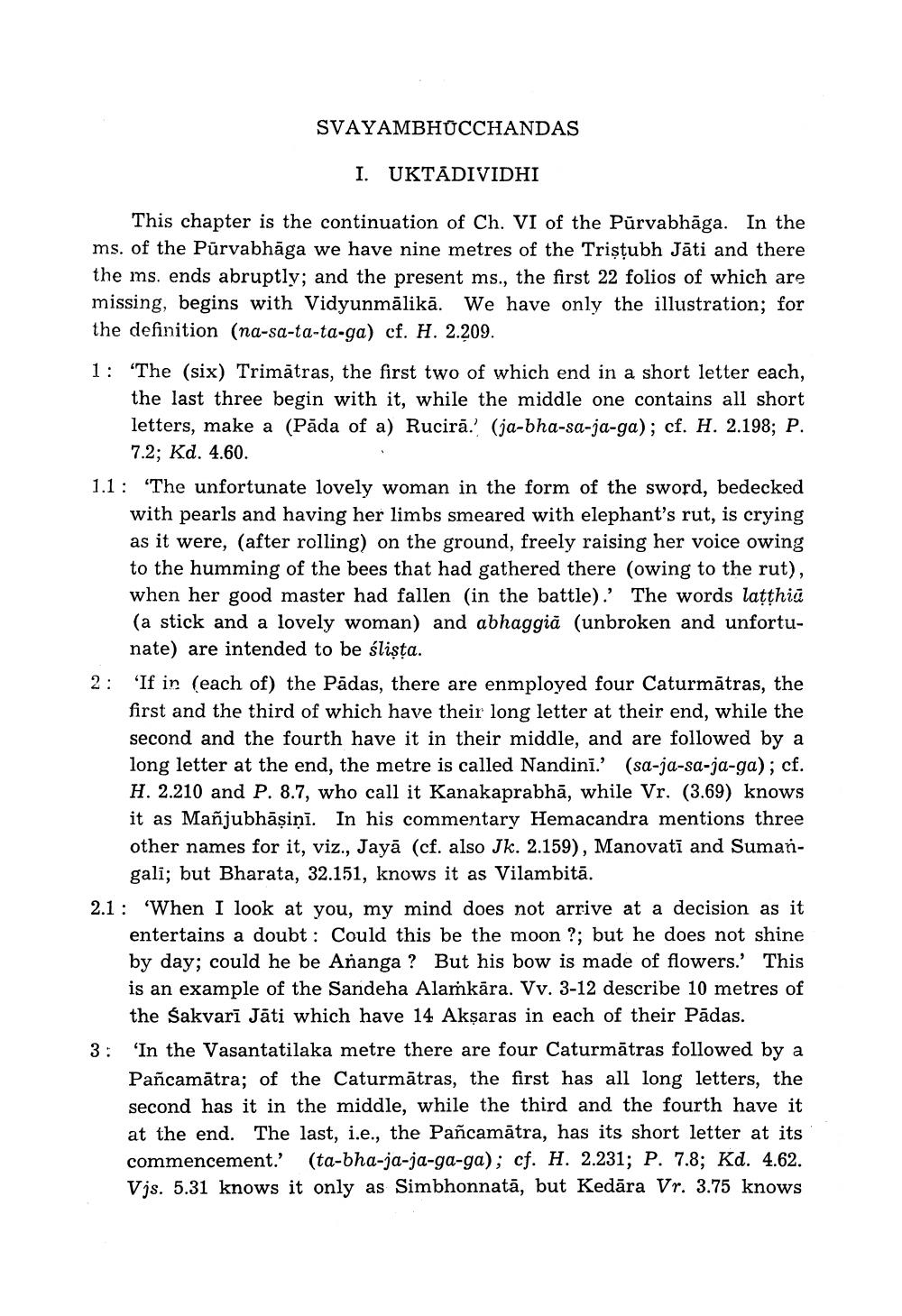________________
SVAYAMBHUCCHANDAS
I. UKTĀDIVIDHI
This chapter is the continuation of Ch. VI of the Pūrvabhāga. In the ms. of the Pürvabhāga we have nine metres of the Tristubh Jāti and there the ms. ends abruptly; and the present ms., the first 22 folios of which are missing, begins with Vidyunmālikā. We have only the illustration; for the definition (na-sa-ta-ta-ga) cf. H. 2.209.
1: "The (six) Trimātras, the first two of which end in a short letter each,
the last three begin with it, while the middle one contains all short letters, make a (Pāda of a) Rucirā. (ja-bha-sa-ja-ga); cf. H. 2.198; P.
7.2; Kd. 4.60. 1.1: 'The unfortunate lovely woman in the form of the sword, bedecked
with pearls and having her limbs smeared with elephant's rut, is crying as it were, (after rolling) on the ground, freely raising her voice owing to the humming of the bees that had gathered there (owing to the rut), when her good master had fallen (in the battle).' The words latthiä (a stick and a lovely woman) and abhaggiă (unbroken and unfortunate) are intended to be ślista. 'If in (each of) the Pādas, there are enmployed four Caturmātras, the first and the third of which have their long letter at their end, while the second and the fourth have it in their middle, and are followed by a long letter at the end, the metre is called Nandini.' (sa-ja-sa-ja-ga); cf. H. 2.210 and P. 8.7, who call it Kanakaprabhā, while Vr. (3.69) knows it as Mañjubhāșiņi. In his commentary Hemacandra mentions three other names for it, viz., Jayā (cf. also Jk. 2.159), Manovati and Suman
galī; but Bharata, 32.151, knows it as Vilambitā. 2.1: 'When I look at you, my mind does not arrive at a decision as it
entertains a doubt : Could this be the moon ?; but he does not shine by day; could he be Ananga ? But his bow is made of flowers.' This is an example of the Sandeha Alamkāra. Vv. 3-12 describe 10 metres of
the sakvarī Jāti which have 14 Aksaras in each of their Pādas. 3: 'In the Vasantatilaka metre there are four Caturmātras followed by a
Pañcamātra; of the Caturmātras, the first has all long letters, the second has it in the middle, while the third and the fourth have it at the end. The last, i.e., the Pañcamātra, has its short letter at its commencement.' (ta-bha-ja-ja-ga-ga); cf. H. 2.231; P. 7.8; Kd. 4.62. Vjs. 5.31 knows it only as Simbhonnatā, but Kedāra Vr. 3.75 knows




